#Population of chicago 1930
Text
Population of chicago 1930

There were 1,152,868 housing units at an average density of 5,075.8 per square mile (1,959.8/km 2). The 2000 United States Census had shown the population density of the city itself was 12,750.3 people per square mile (4,923.0/km 2), making it one of the nation's most densely populated cities. More than half the population of the state of Illinois lives in the Chicago metropolitan area. Population Historical populationĪs of the 2010 United States Census, there were 2,695,598 people and 1,194,337 households residing within the city limits of Chicago. 2.1 2019 United States Census Bureau American Community Survey estimates.The city's population peaked in the 1950 Census, although two of the three most recent Censuses as of 2022 have shown moderate growth. Within fifty years of the Great Chicago Fire of 1871, the population had tripled to over 3 million. By the close of the 19th century, Chicago was the fifth largest city in the world. Within the span of forty years, the city's population grew from slightly under 30,000 to over 1 million by 1890. English is the primary language of the city, and Christianity accounts as the predominant faith.ĭuring its first century as a city, Chicago grew at a rate that ranked among the fastest growing in the world. The ethnic makeup of the population is 28% Hispanic and 72% belong to non Hispanic background. The racial makeup of the city in 2010 was 45.3% white (31.7% non-Hispanic white), 32% black, 5% Asian, and 3% from two or more races. It is the third largest city and metropolitan area in the United States by population, and the city was home to over 2.7 million people in 2020, accounting for over 25% of the population in the Chicago metropolitan area home to approximately 9.6 million. For other uses, see Chicagoan (disambiguation).Ĭhicago's demographics show that it is a large and ethnically diverse metropolis.

0 notes
Text
Population of chicago 1930

Civilian Veterans are 71,067, Veterans by Sex in Chicago city are 92.1% are Male and 7.9% are Female. The Chicago-Naperville-Elgin consists of Cook County, DeKalb County, DuPage County, Grundy County, Kankakee County, Kane County, Kendall County, McHenry County and Will County.Ĭhicago is the third largest city in the United states by rank, According to US Population Census, April 1, 2020, Chicago population in 2020 is expected to be 2.74 Million, According to 2018 U.S Census estimates, 6.5% of Chicago population are under 5 years, 78.8% are above 18 years and older, 12% are 65 years and older people. The Chicago-Naperville CSA consists regions of Chicago-Naperville-Elgin, Kankakee(Illinois) and Michigan City-La Porte(Indiana). The Chicago area (Chicago-Naperville, IL-IN-WI CSA) is the third largest metropolitan area in the United States. The Greater Chicago or Chicago metropolitan area, commonly referred as Chicagoland or Chicagoland. Source : Annual Estimates of the Resident Population: Apto J& 2020 US Census updatedChicago city UN Urban Agglomeration Population Prospects - 1950 to 2035 The median household income is $55,198, employment rate is 60.7% and poverty rate is 19.5%. Chicago was first explored in 1673 by the French explorers and in 1833 and Chicago was incorporated as a town and city in 1837. The Chicago area has one of the highest gross domestic products (GDP) in the world, census data show the Chicago city lost population for the fourth consecutive year from 2015 to 2019. Chicago population in 2022 is estimated to be 2.74 Million with an area of 227.63 square miles (589.56 sq km). The Chicago has one of the world's largest and most diversified economies. Chicago remains the third largest city in the U.S, behind New York and Los Angeles. World Cities | US Cities > Illinois Chicago PopulationĬhicago is the most populous state of Illinois state of United States of America.

0 notes
Text
SE Timeline Rough Draft
Early 1800s - Martians arrive on Earth after a century of observation. They either land in central Siberia or the Alps. Over the course of a couple years, the Martians split up to infiltrate human society. They are extremely successful.
1868 - Computers are invented.
1889 - Lupe Altena is born.
1897 - Personal computers invented. Sold to the general public.
1904 - Hammond is created.
1909 - There are over 500 webpages on the world wide web. This is the start of the internet.
1914 - WW1.
1917 - Carmine Keller is born.
1922 - WW1 ends in a “stalemate” with the establishment of multiple European DMZs.
1925 - The first man in space. A political party, “The Machine”, takes the majority of power in congress.
1930s - Britain goes to war with Japan. Superscience race begins, leading to the invention of the atomic bomb. Lupe splits from The Machine (The New Machine) and funds the creation of the Martian hunting team known as ATLAS. First mutant powers begin to emerge.
1940s - Economic stagnation as conflicts at the European DMZs begin to escalate. America looks to profit as it appears another outbreak of total war may occur in Europe. Hammond and Azelfafage meet; Lupe catches ADP. Friday joins ATLAS.
1951 - Yellowstone Incident. Global atomic war begins 7 hours later. The winter of that year lasts for almost a decade.
1951-1969 - Famine. Plague. Civil war. Nuclear, broken weather. Superpowered chaos. Tall tales emerging from the wastes of red creatures with a hundred eyes…
1955? - Lupe Altena establishes the Promethean Society and headquarters The New Machine in the outskirts of the former city of Chicago.
1958 - The construction of what will eventually be known as “The NEC” begins.
1960s - Countries not as devastated by the atomic war (such as Australia, New Zealand, Iceland, Switzerland, Argentina, etc) attempt peacekeeping operations in the United States with little to no success. The Disincorporated United States of America is established, and a corporate committee of “superheroes” acts as its sword.
1970? - Martians reveal themselves to the world, promising aid and support in exchange for Earth’s resources. They soon begin terraforming Earth’s atmosphere in order to ensure a major ice age.
1971 - Intersolar Protocol is signed. A new species, known as “Chimera”, explodes across the world.
1973 - Maya Fontaine is born.
1974 - Carson Keller is born.
1980s - Necropolis turns into a tower of Babel, a megacity of stacked/layered cities, out in the middle of Lake Michigan due to the Martian King Azelfafage. The city’s population grows to the size of a country, and is unofficially regarded as such (to the ire of DUSA). It becomes a free economic zone, influenced largely by foreign capital.
1990 - Lupe Altena disappears. The authority of the NEC falls into feudalism between cities and layers. Francis Mueller is born.
1991 - Outbreak of firestorms across the southern states. Desmond Arkady is born.
1995 - Hammond disappears.
1999 - Francis experiences a “medical incident”. She develops a form of amnesia.
2000 - Francis and Vincent meet.
2003 - Sloane Arkady abandons the family. Francis is handed over to alleged crime lord Carmine Keller.
2004 - The remnants of the Arkady family move to the NEC.
2005 - Desmond is inducted into the Promethean School of Science.
15 notes
·
View notes
Note
my family is from three known places: targu neamt, schedrin and a place called taboschnik (?) somewhere in belarus that i can’t find when i look it up anywhere. id be very interested if you could find anything out about targu neamt or especially taboschnik!
my paternal zayda worked in a labor camp during the war but came home when he could, on sundays. it was on one of those rare days home that he married my bubbe. they fled from targu meant to a displaced persons camp in germany in 1947, fleeing the russians (either present or encroaching?) in the middle of the night. there’s a note on the back of an old photo, that they wrote to my eldest aunt (who was an infant at the time): ‘this picture was taken a few days before leaving romania for a long, hard and unknown trip. decision to leave: july 16 at 2pm. departure: july 17 2am. baggage: none, except our sweet daughter’. my zeida and bubbe made it to the camp, and he sold cigarettes illegally to make money. then they came to canada, and had three more children.
i don’t know much about my mom’s maternal family, from schedrin and taboschnik. they (my maternal great grandparents) likely came over in the 1920’s. the family myth is they met on the boat to america, where they would go on and settle down in chicago after encountering each other again years later. we do know that one of my grandma’s parents was VERY religious, though. that probably comes from the fact that schedrin was founded by the third chabad rebbe. it always had a strong lubavitcher presence.
i want to say i really love your account. it breathes so much life into our past, and makes my heart warm. i hope this ask isn’t too long, im on mobile so it’s hard to see. much love <3
Much love to you also <333 And thank you for your support!
I searched Taboshnik and Tabashnik in Russian and found the village Tabachniki (Tabačniki) in Belarus, 8km of the town Jeziaryšča in the Vitebsk region. I am not sure if this is really your village and I couldn't find anything about the Jews from there. The Vitebsk region in general was full of them.
But I can tell you surely something about Targu Neamt. Jews were a constant presence in the town’s life until the end of World War II. Following WWII (which did not affect them to a large extent) and the installation of the communist regime, most of them decided to leave, thereby leaving behind a wonderful heritage that is slowly disappearing.
Jews were first mentioned in Targu Neamt in a document from 1660s, and the oldest tombstones in the Jewish cemetery are dated 1677 and 1689. Under the Ottomans, Jews in Târgu Neamț were organized into an isnaf (guild) led by a staroste.


The first blood libel allegation in all of Romania occurred in Targu Neamt in 1710: Jews were accused of killing a Christian child and using his blood for ritual Passover use. Consequently, 5 Jews were killed and another 22 arrested, “denounced” by a monk and two Jewish converts. After an appeal to the prince of Moldavia, the case was investigated, its falsity demonstrated, and the arrested Jews freed.
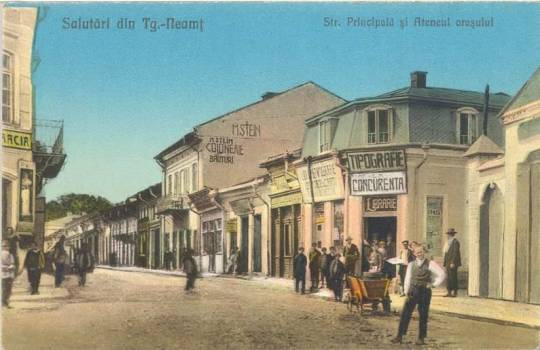
In 1821 Greek rebells, in a violent uprising against the Turkish rule (Zavera), crossed Moldavia, set fire to the town, and murdered half the Jewish population. In 1899 the Jewish population reached 3,671 (42% of the total). After Jews achieved emancipation in 1919, they participated in municipal life, electing two members to the municipal council in 1930 through the Union of Romanian Jews. In July 1942, the Romanian forest engineer Gheorghe Cojoc arranged with authorities for Jews from the town to work in forests near Targu Neamt, saving them from deportation to Transnistria.

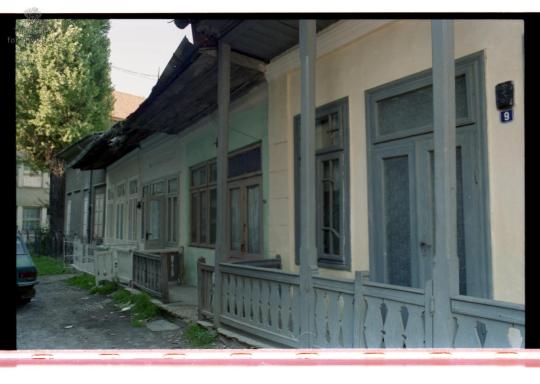
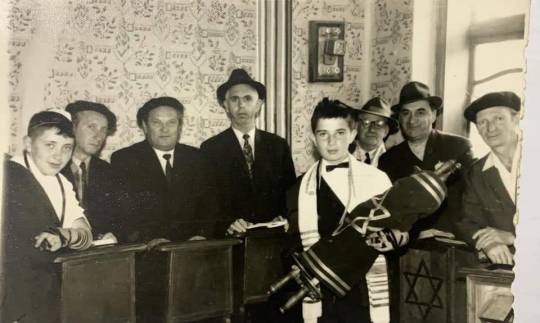
In 1947, some 2,900 Jews lived in Targu Neamt. Their numbers then diminished due to communist persecution and emigration, mainly to Israel. Until 1985 there were nine synagogues still standing in the town, but then eight of them were torn down in the urban renewal that transformed Targu Neamt into a carbon copy of almost every other town nearby. In 1992, just 34 Jews lived there; and in 2004 there were 30, with one beautiful functioning synagogue.
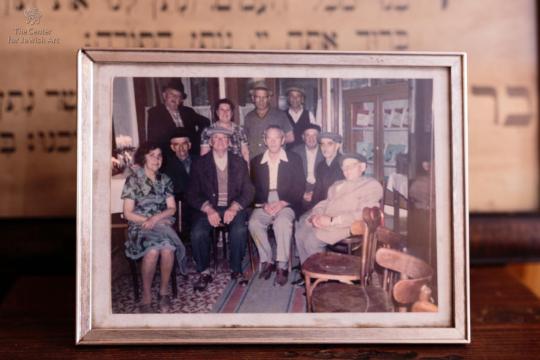
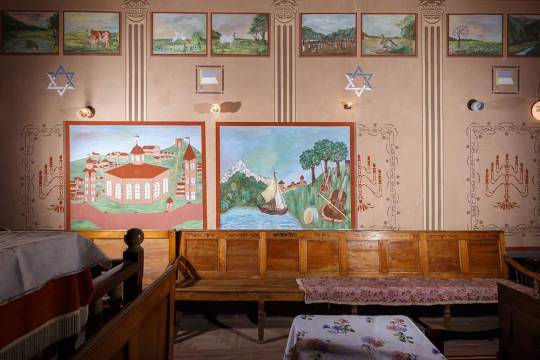
23 notes
·
View notes
Text

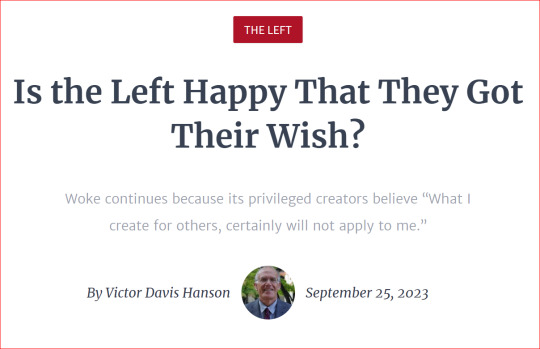
America has been in a veritable cultural revolution since the 1960s. Nearly all our major institutions finally became woke—the administrative state, traditional and social media, universities, K-12, the corporate boardroom, entertainment, professional sports, and the foundations.
So the Obama and the Biden administrations finally seemed to have achieved their aims, in what the Obamas once boasted would be the “fundamental transformation” of America into something unrecognizable by its Founders. But what they gave us was nihilism—the destruction of norms, laws, and customs. There is no border, no criminal justice system, no real president any more.
The citizen is a serf, the illegal alien the veritable citizen. The former needs a passport to reenter the country, the latter is waved on through. There is a slob in gym shorts and a hoodie establishing dress codes for the Senate, teen murderers bragging that they won’t spend a day in jail, and a would-be state legislator filming herself doing sexual gymnastics while begging for cash only to be upset over the invasion of her “privacy.” So the Left got what it wanted and gave us our new America.
The curious result, however, is that even the elite Left is now forced to live among, and cannot always escape, the ruination it created—and for the first time is becoming slightly unhappy with what it birthed.
Critical legal theory has now trickled down into most of our large cities. It insists that criminals are not criminals at all, but rather victims of prior racial and class oppressions. Thus their victims should blame society for their injuries, not their predatory victimizers. Critical legal theory is a sort of Marxist redistribution schema—the middle class almost deserves its equal share of violence commensurate with that of the inner city.
As a result, in Chicago and Oakland and hundreds of other cities, prosecutors let out criminals without bail or sometimes even indictments—in part out of spite and hatred of middle- and upper-middle-class America that supposedly deserves a payback for its bourgeois indifference, in part out of sheer ignorance of the unleashing of human nature once all deterrence is removed.
And the result?
Anxious liberal professionals are fleeing our major cities in the greatest out-of-state migrations since the 1930s. Or they simply avoid their own downtowns. Or sometimes they are reduced to putting placards in their parked cars begging criminals not to smash and loot them, or, for the richer, hiring their own security guards, or using apps to warn others against deposits of urban human excrement on downtown sidewalks.
The Left, aside from their desire for new dependent constituents, felt borders were anachronistic constructs that unfairly denied the inherent and universal human right of the poor and oppressed to go anywhere they pleased, without legality or permission of their targeted hosts. So they erased the southern border. Some 7-8 million illegal entries followed since January 2021.
And the result?
African-Americans in Chicago are demonstrating against mass influxes of illegal aliens into their cities who bury entitlements and social services. The Left used to calls such protests “xenophobia.”
Leftwing New York Mayor Eric Adams has gone from calling those racists who opposed illegal immigration to becoming a veritable nativist. He is now screaming that illegal aliens are “destroying” his city, damning the Biden administration, and warning of bankruptcy. Adams too is unhappy that leftists like himself finally got what they wanted.
Progressives recalibrated a tiny sliver of the population—well less than 1 percent—experiencing historically documented biological “sexual dysphoria” and announced that transgenderism was now both commonplace and an existential civil rights crisis involving anywhere from 5 to 20 percent of American youth and up to 40 percent on college campuses that appeal to the elite leftwing rich kids.
The Left demanded official recognition of multiple genders, the green-lighting of biological males competing in women’s sports, the mainstreaming of risqué drag queen shows often before audiences of minors, and the preemptive smearing of anyone who believed that sexuality is biologically determined rather than fluidly socially constructed.
And the result?
Corporate pile-ons and trendy transgendered advocacies have ruined Bud Light, once American’s premier beer brand. The once beloved but now woke and arrogant Disney Corporation is bleeding audiences, customers, and subscribers. Due to its provocative arrogance, Disney managed to become all but despised by half the nation. Ditto other woke major corporations from Target to the Los Angeles Dodgers.
Parents—many of them doctrinaire liberals—of gifted female athletes whose careers are derailed by transgender males, of teenage girls who must use locker rooms with biological males, of small children who witness in-your-face drag queen exhibitions—now feel bushwhacked by their own prior advocacy.
The Left has waged a war on fossil fuels for decades. But once in power it has cancelled critical pipelines, restricted federal oil and gas leases, hectored oil and gas lenders, shut down entire oil fields, and issued arbitrary deadlines when internal combustion engines are to be banned, and clean burning natural gas appliances to be phased out.
And the result of turning the nation “green”?
Gasoline prices spiked to all-time highs, hurting most the poor and minorities, the supposed political base of the Democratic Party. When elections near, only then does a panicked Left begin draining the strategic petroleum reserve, while begging illiberal regimes abroad to pump more oil that they we will not—in a desperate effort to lower gas and diesel prices, at least temporarily until elections are over.
Bicoastal wealthy elites lecture down to Americans about the existential crisis of “climate change” and the radical revolutions necessary to “transition” (a favorite, multipurpose woke word) to solar, wind, and battery power.
And the result? Those who can least afford high energy prices now pay over $5 a gallon for gas and more for diesel in our wealthiest coastal blue states—on the directive of their affluent utopian advocates.
Leftwing rich liberals for a half century have virtue signaled their support for affirmative action and de facto racial quotas. The unspoken presumption was that they would always have the wherewithal to navigate around such systemic discrimination to ensure their own still went to the “right” colleges and universities and onto prestigious jobs and positions.
But then the woke revolution redefined affirmative action as “reparatory” admissions and hiring. That radical expansion of racial quotas meant elite universities like Stanford and Princeton soon bragged in racist fashion that they would only admit so-called whites as 20-30 percent of their incoming classes, despite their traditional proportional representation of 65-70 percent of the general population.
Soon such progressive discriminatory policies meant that after athletes, so-called legacies, the children of faculty and administrators, and the offspring of multimillionaire donors were accommodated, the new tiny white quotas were completely exhausted—even for the anointed children of the bicoastal left.
High-paid suburban and progressive professionals whose privileged, and high achieving sons and daughters with 4.0-plus grade point averages and near perfect SAT scores, with an array of “community service” blue-ribbon resumés—were summarily rejected en mass from America’s most prestigious schools.
Prior SAT camps, prep schools, tutors, “extracurricular” enrichment summer excisions, and prestigious internships and apprenticeships went all for naught under the new racism.
And the result of the war on meritocracy? Elite liberals were shocked, shocked!
Such reverse-discrimination had traditionally targeted solely the children of deplorables, irredeemables, and clingers, the meritocratic lower white working classes, who were usually preposterously written off as white privileged and supremacists and thus usually summarily rejected. Yet the architects of affirmative action never dreamed that their Frankensteinian creation would devolve into a quota monster devouring its parent.
As far as the professors, who opportunistically applauded the new -studies therapeutic courses, the DEI-apparat, the reparatory admissions, as well as the end of SAT and ACT scores and of the comparative ranking of high-school GPAs?
For those who taught real disciplines—languages, traditional history and literature, science, math, and engineering—they faced three dilemmas under the new nonmeritocratic admissions: 1) inflate their grades, 2) reduce class requirements, or 3) maintain grading and course standards and thus be targeted by DEI commissars should their grading reveal a “systemic” pattern of “racism.”
After spending their careers damning administrative “bloat,” and the siphoning of university resources from teaching to fund administrative fiefdoms, suddenly faculty were forced to agree that they needed thousands of DEI supervisors and commissars, who were even more superfluous but also far more intrusive into faculty autonomy than the old-boy functionaries of the past. The result? Is it now “All administrators are bad, but some are not as bad as others?”
These examples of liberal utopianism backfiring on its godfathers are becoming endless as the Jacobin revolution known as woke destroys meritocracy, the ancient laws of human nature, pragmatism, and common sense. Will the revolution then finally wither away once it continues to gulp down its own privileged woke sacred cows?
Perhaps, but perhaps not.
Woke is a religion, not an empirically based revolution. It requires blind faith and ideological zealotry that ignores data, smears apostates as blasphemers, and is fueled by a climate of fear as it uses public shaming, cancel culture, doxing, shadow banning, ostracism, and career destruction to bulldoze ahead.
That it is now mowing down its originators may not matter much, even if for the short term the current boomeranging should be teaching leftists that their ideology is unworkable and ultimately destructive of civilization. History, after all, is replete with misguided zealots who even to the very first shot of their own firing squads still believed in the catastrophic cultural and political upheavals they had unleashed on others.
Partly woke continues, then, because its privileged creators still cling to the belief, “What I create for others, certainly will not apply to me and mine.” And when it does, as it is beginning to now, they stay long in denial and continue their woke advocacy because they still hope their progressive piety and fides will someday earn them heaven on earth.

5 notes
·
View notes
Text
#unhallowedarts - Castles, Swords and Nimble Wits. Hal Foster's Prince Valiant as Demon.

“For the sake of fair Ilene Val dares pit his nimble wit against the might of the Ogre of Sinstar Wood and all his followers.”
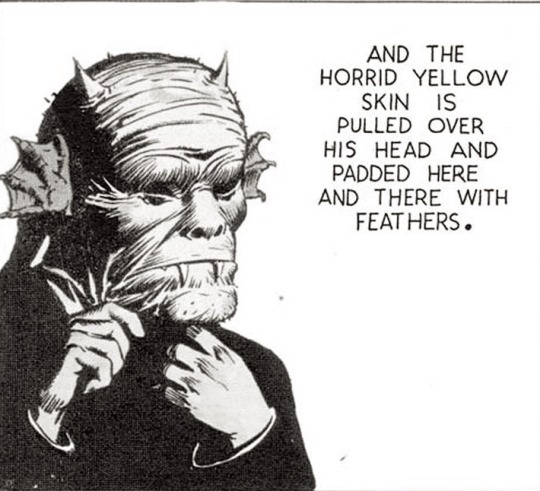
Maybe drawing ladies’ underwear for catalogues is not the worst job a young graphic artist can land. It was the first steady creative work young Harold from Halifax did. Back in 1912, for the Hudson Bay Company. And after moving on from drawers to drawing the Lord of the Apes, finally, in the early 1930, Hal Foster had a chance to prove what he dab hand he was in narrating stories with pictures. With a friend, he cycled the 1,000 miles from Canada to Chicago, to take art classes, studied the Great Ones from the Golden Age of Illustration and especially the American masters did it to him. With something close to his contemporary Leyendecker’s aesthetics, it were Maxfield Parrish and especially N.C. Wyeth who proved to be a major influence on one of the milestones of the development of graphic novels into a serious artistic medium: Hal Foster’s “Prince Valiant”. What looked like quite the adaption from Wyeth’s take on the rich imagery of “Le Morte d’Arthur” by Thomas Malory, published some 15 years before as “The Boy’s King Arthur”, Foster’s masterpiece of depicting a narrative was first published in the “New Orleans Picayune” in February 1937. And no one less than press tsar Randolph Hearst himself recognised the potential of Foster’s talent and tale and granted him full creative control and regular publication of what was to become the story of “Prince Valiant in the Days of King Arthur”. For the next 30 years, until Foster finally left the project in 1971.
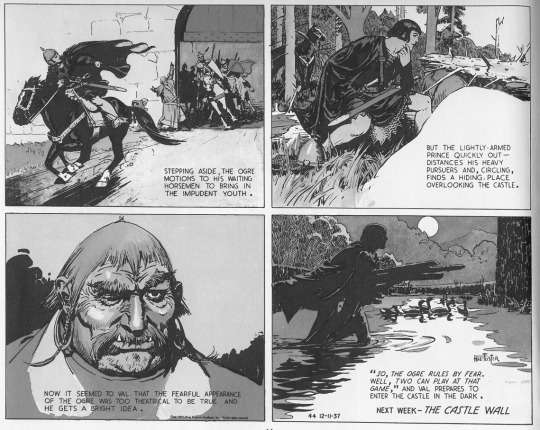
“Prince Valiant” is, taken all its high artistic value for granted, Foster’s brilliant use of chiaroscuro and highly detailed, cinematic illustrations, as historical as a typical Hollywood history flick. Which means: not in the least. The 5th century late- and post-Roman world in Foster’s imagination is populated by Vikings, Muslims, Knights from the Late Middle Ages, Renaissance tech and what not. And we do have a historical date. Young Val witnesses the murder of Flavius Aëtius in Rome in September 454AD. That witches and wizards and dino-like swamp monsters disappeared from the story during the 1940s is hardly noticeable in Foster’s heap of broken historical images. But that usually doesn’t spoil a good story. At least if the hypocrite lecteur is not a true-blue historian who had archived his own sense of wonder somewhere in a deep cellar where spiders and dust bunnies nest and the ghosts of heroic epics walk the night. And as ahistorical as Foster narrates Val’s story, imagery and ideas remain brilliant, especially when his hero uses his brains instead of the magic “Singing Sword”, a downright loveable and inspiring trademark feature of the story.
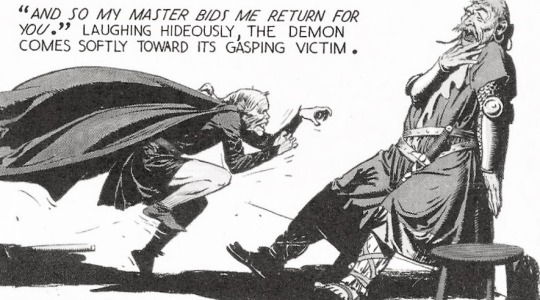
One memorable take was published early on, already in August 1937. Young Val, still Sir Gawain’s squire, sets forth to wrest the castle of Maid Ilene’s parents from the clutches of a robber baron, appetisingly known as “The Ogre of Sinstar Wood”. And what sounds like the typical onset of a chivalric hero quest, climaxing in blood and thunder, is solved in an Ann Radcliffe-style Gothic charade. Making a devil’s mask from the skin of a captured goose and using his black cloak as something that looks like bat wings, Val invades the castle at night, doing quite the aerial acrobatic routine with a rope on the side, scares the Ogre to death and drives his henchmen from the castle by haunting the place for days in his demon guise. Mission accomplished, without a sword being drawn. And no one of his numerous successors in drawing chivalric – or other – adventure stories managed the same tongue-in-cheek humour and innovation in their take on epics than Foster did. While only few rival his artistic talent.

For a quick glimpse into Hal Foster's art and Prince Valiant's tale - below is a medium quality online edition of the first volume from 1937 - 1939
6 notes
·
View notes
Photo
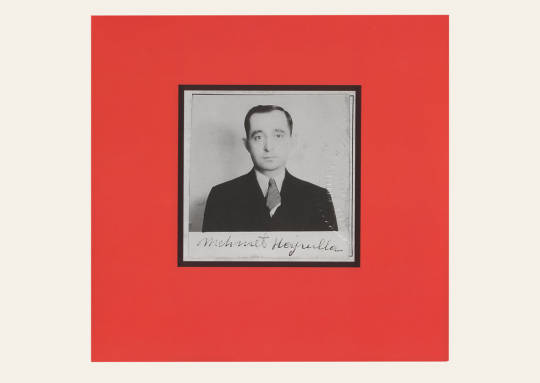
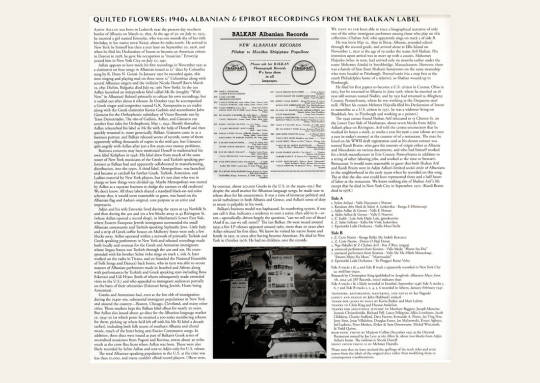
Quilted Flowers: 1940s Albanian & Epirot Recordings from the Balkan Label LP Limited Edition
Ajdin Asllan was born in Leskovik near the present-day southern border of Albania on March 12, 1895. At the age of 30, on July 12, 1925, he married a girl named Emverije, who was one month shy of her 16th birthday, in her native town Korçë, about 80 miles north. He arrived in New York by himself less than a year later on September 20, 1926, and when he filed his Declaration of Intent to become an American citizen in 1928 as a resident of Detroit, he gave his occupation as "musician." Emverije joined him in New York City on July 27, 1931.
Asllan appears to have made his first recordings in November 1931 as a clarinetist on four songs issued as 12” discs by Columbia sung in Albanian by K. Duro N. Gerati. In January 1932 he recorded again, this time singing and playing oud on three Columbia 12”s along with several Albanian singers and the violinist Nicola Doneff (born March 21, 1891 Dichin, Bulgaria; died July 19, 1961 New York). In 30s Asllan launched an independent label called Mi-Re (roughly “With New” in Albanian) Rekord primarily to release his own recordings, but it stalled out after about 6 releases. In October 1941 he accompanied a Greek singer and songwriter named G.K. Xenopoulos as an oudist along with the beloved Greek clarinetist Kostas Gadinis and accordionist John Gianaros for the Orthophonic subsidiary of Victor Records run by Tetos Demetriades. The trio of Gadinis, Asllan, and Gianaros cut another four sides for Orthophonic May 1, 1942. Shortly thereafter, Asllan relaunched his label as Me Re with the help of Doneff and then quickly renamed it, more generically, Balkan. Gianaros came in as a business partner, and Balkan released scores of records, some of them seemingly selling thousands of copies in the mid-40s, but Gianaros split angrily with Asllan after just a few years over money problems.
By 1947, Doneff had trademarked the Kaliphon label, which drew from much of the same roster of New York musicians of the Greek- and Turkish-speaking performers as Balkan and apparently collaborated in distribution, marketing, and manufacturing into the 1950s, but some business distinction had been drawn. A third label, Metropolitan, was launched and became at catchall for further Greek, Turkish, Armenian, and Ladino material by New York players, but it's not clear who was in charge or how things were divided up. Maybe Metropolitan was started by Asllan as a separate business to dodge the taxman or old creditors? We don’t know. All three labels shared a standard black-on-red color scheme that, it would seem reasonable to guess, was based on the Albanian flag and Asslan’s original, core purpose as an artist and impresario.
Adjin and Emverije lived during the 1930s into the 50s first at 143 Norfolk St. and then at 42 Rivington St. (where Asllan opened a record shop), in Manhattan's Lower East Side, where Eastern European Jewish immigrants surrounded the small Albanian community and Turkish-speaking Sephardic Jews, and abutting Little Italy and a strip of Greek coffee houses on Mulberry Street. He worked within a network of primarily Turkish- and Greek-speaking performers in New York and released recordings prolifically made both locally and overseas through the 40s and 50s. He corresponded with his brother Selim (who sings on track 1, side A, later worked on the radio in Tirana and co-founded the National Ensemble of Folk Songs and Dances) back home, who was able to secure masters of Albanian performers recorded in Istanbul and Athens along with performances by Turkish- and Greek-speaking stars including Rosa Eskenazi and Udi Hrant (both of whom subsequently made extended visits to the U.S.)
Greeks and Armenians had, even at the low ebb of immigration during the 1940s-50s, substantial immigrant populations in New York and around the country - Boston, Chicago, Cleveland, and many other cities. Those markets kept the Balkan label afloat for nearly 20 years. But Asllan also issued about 40 discs for the Albanian-language market ca. 1945-50 (at which point he retained a 500-series numbering scheme for them, picking up where he’d left off with his Me Ri label a decade earlier), including both folk music of southern Albania and choral music, much of the latter anti-Fascist Communist songs. In addition, three discs were issued as part of Balkan’s Greek series of uncredited musicians from Pogoni and Konitsa, towns about 30 miles south as the crow flies from where Asllan was born. The total Albanian-speaking population in the U.S. at the time was less than 10,000, and many couldn’t afford record players. But despite the small market for Albanian-language songs, he made sure to release discs for his countrymen. It was a time of immense political and social turbulence in both Albania and Greece, and the sense of duty to music is palpable in his work.
Balkan’s business model was haphazard. Its numbering system, if one can call it that, indicates a tendency to start a series, then add to it - or not - sporadically, driven largely the question, “can we sell 500 of these? (And if so, can we sell 1000?)” The last Balkan 78s were issued around 1959; a few LP releases appeared around 1960, more than 20 years after Asllan released his first discs. We know he visited his native home and family in 1951, 25 years after having become American. He died in New York in October 1976. He had no children, save the records.
=========
We have so far been able to trace a biographical narrative of only one of the other immigrant performer among those who play on this collection, Chaban Arif, who apparently sings on track 9.
He was born May 22, 1899 in Berat, Albania, attended school through the second grade, and arrived alone at Ellis Island on November 2, 1920 at the age of 19 under the name Aril Shaban. His intention upon arrival was to meet up with a cousin, Mahomet Hajrules (who, in turn, had arrived only six months earlier under the name Mehemet Airula) in Southbridge, Massachusetts. However, there was a family of four from Shaban’s hometown on the same steamship who were headed to Pittsburgh, Pennsylvania (via a stop first at the south Philadelphia home of a relative), so Shaban wound up in Pittsburgh.
He filed his first papers to become a U.S. citizen in Canton, Ohio in 1925, but he had returned to Albania in June of 1928, where he married an 18 year old woman named Nadire, and by 1931 had returned to Allegheny County, Pennsylvania, where he was working at the Duquesne, Pennsylvania Carnegie steel mill. (When his cousin Mehmet Hajrulla filed his Declaration of Intent to naturalize as a U.S. citizen in 1937, he was a widower living on Braddock Ave. in Pittsburgh and working as a painter.)
The 1940 census found Shaban Arif relocated to 55 Clinton St. on the Lower East Side of Manhattan, about seven blocks from Adjin Asllan’s place on Rivington. Arif told the census enumerator that he worked 60 hours a week, 52 weeks a year for $916 a year (about $17,000 a year in today’s money) at the counter of of a restaurant. The man he listed on his WWII draft registration card as his closest contact was named Kardi Braim, who gave his country of origin either as Albania and Macedonia on different documents, had himself worked for a brick manufacturer in Erie County, Pennsylvania in addition to a string of other laboring jobs and worked at the time at Stewart’s Restaurant. It would seem reasonable to guess that both Shaban Arif and Kardi Braim were in Adjin Asllan’s limited social circle of Albanians in the neighborhood in the early 1940s when he recorded on this song. The $1 that the disc cost could have represented three and a half hours of labor at the restaurant.
We know nothing else of Shaban Arif’s life except that he died in New York City in September, 1971. (Kardi Braim died in 1978.)
5 notes
·
View notes
Text
Defining the 4 genres of blues music
urban blues
urban blues will have been performed in cities with significant african american populations, like memphis, detroit, chicago from the 1930s
more codified and elaborate as the performer had to adapt to a broader audience aesthetic
vaudeville blues singers were popular in the 1920s
unusual keys would be used to reach people at the back of a room, and create surprise
common themes: migration/dailylife/ social consciousness/ travel/ war/ segregation/ relationships/ activism and politics
3 major urban blues categories: sophisticated version of country blues / amplified country/ amplified jazz-inflected blues
1930s sophisticated country blues
many jazz-inflected bands toured and performed in clubs and concert venues throughout California south and south-west
1950s and 60s, urban blues would tour europe and uk, which influenced formation of blues rock groups like led zeppelin and eric clapton and the paul butterfield blues band and dire straits
almost all urban blues songs were vocals with instrumentals accompniment
followed a 3-line verse form, where the first line was repeated in the second then the thought was repeated in the rhyming third line
most verses began with a quatrain taking up the same amount of time as the first line of the standard 3line verse
the sophistiocated country blues would be backed by a guitar or piano
denser yexture and rural blues due to a complex harmony and the vocals would be ligher instead of raspy
amplified post war2 blues would see singers taking more liberties with cries, moans, hollers and melodic elaborations than chicago singers
one guitar would emphasise the rhythm, another would play melodic riffs and figures and included a harmonica too
jazz-inflected blues would have a singer, guitarist with a small jazz band (piano, bass, drums and horns), the vocals would be shouters
urban blues commented on the ups and downs of daily life, protesting mistreatment by lovers and discrimination and economic hardship
country blues
relies on the expressive power of the voice with sparse instrumental accompaniment (guitar or harmonica) which is more improvisatory and freedom than urban blues
the music of day to day life
delta blues
also known as mississippi blues
solo performances accompanied by guitar and relied on techniques like sliding of a bottle neck to blend the notes
melodic phrases on the guitar to respond to the voice in an improvised call and response pattern
song topics: failed romance, sexual escapades and tales of life on the road
high contrast to the classic blues, because this tended to be males singer- guitarists
recording of blues music was curtailed during the great depression
during ww2 traditional blues fell out of popularity
rhythm and blues (rnb)
post war african-american music
leads to white rock music which has been derived from it
a development of the sopisticated urban music which had been developing from the 1930s
large group and small group rhythm and blues
small groups would consist of 5-7 pieces and each would take their turn in the limelight
this influenced the development of rock and roll and there are no hard rules defining them from eachother so much of the music could fit both categories
by the mid 50s, much of the guitar-led electric blues music from chicago and mamphis was rhythm and blues as it appealed to older buyers
by 1960s rhythm and blues had aged with its audience
rhythm and blues has attained a new meaning due to british bands which followed, like the 'beatles' and 'rolling stones' which tended to be mod rock bands calling their work r&b to attract an audience
thoughts:
I now have a better understanding of the categories of blues music and i intend to now research different Belgian beers and beer favours so that i can find a flavour pairing for one of the each genres of beer to be based off of. i hope it will also help with the design of the packaging, looking at which are more sophisticated, what each category sings about in themes and how the music in the background might sound. this will allow me to create a visual correlation with the sound of the music for a unique take on beer packaging and to represent Blegium&Blues bar well.
carnegie hall. “History of Urban Blues.” Timeline of African American Music, timeline.carnegiehall.org/genres/urban-blues. [Accessed 16 Apr. 2024.]
“The Country Blues: Rural Soul Music of the Southern USA.” Smithsonian Folkways Recordings, folkways.si.edu/country-blues-rural-soul-southern-usa/music/article/smithsonian#:~:text=The%20country%20blues%20is%20music. [Accessed 16 Apr. 2024.]
Hope, Annika. “What Is Country Blues?” Music Gateway, 22 Aug. 2019, www.musicgateway.com/blog/music-industry/what-is-country-blues. [Accessed 16 Apr. 2024.]
Gioia, Ted. “Mississippi Delta Blues | Artists, Music, & Facts.” Encyclopædia Britannica, 2019, www.britannica.com/art/Mississippi-Delta-blues. [Accessed 16 Apr. 2024.]
Ward, Ed. “Rhythm and Blues | Music.” Encyclopædia Britannica, 13 Jan. 2017, www.britannica.com/art/rhythm-and-blues. [Accessed 16 Apr. 2024.]
0 notes
Text

2024-04-09: Tutwiler (Town)
A few miles southeast of Clarksdale lies the dying town of Tutwiler. The town is in neighboring Tallahatchie county, and had a population of less than 1,000 in the 1930 census. After the rail yard was moved to Clarksdale in 1929, the town began its downward spiral in earnest. For the folks that have a job, a good many of them work down the way at Parchman.
Points of Interest:
Tutwiler Depot

Ensconced in legend as the place where W. C. Handy first heard the Blues performed by an itinerant musician using a knife as a slide for his guitar. You can catch a train here on the Yazoo & Mississippi Valley Railroad, which is part of the Illinois Central rail system, to get anywhere in the Delta. Or if you can afford it, you can take a train north to Chicago and be part of the Great Migration and leave this place behind forever.
Tutwiler Hotel

Back when the town needed a place for the (white) rail workers to stay or the (white) people coming in on the train, the two-story Tutwiler Hotel was there to provide a room for the night and 50-cent hot meals. Now it's barely scraping by and falling into disrepair, and is a lot less picky about the skin color of the guests. The kitchen is still open, though, and it's a good place to learn about current events and gossip.
Tutwiler High School

A new high school for the white students of Tutwiler was built just before the rail yard and all its jobs got relocated to Clarksdale. It's got a bunch of classrooms and a gymnasium and a class size that gets smaller every year. Although the school is just a regular school with a corresponding marching band and not of much interest on its own, it's a persistent symbol of how the town was slighted and forced into decline when the rail yard disappeared.
The Old Rail Yard
Little more than a maze of rusted switches and rotting cross ties, no one is quite sure what to do with the infrastructure here. It languishes in the sun like an infected scab on the outskirts of town.
0 notes
Text

Brenda Cherry (born March 19, 1958) is a civil rights activist from Paris, Texas.
She is the President and co-founder of Concerned Citizens for Racial Equality, a non-profit civil rights organization. Founded in 2003, CCFRE co-sponsored events with the Department of Justice, Lone Star Legal Aid, and the American Civil Liberties Union.
She grew up in Blossom, Texas. Her father, Zeb Reynolds, was a farmer, and her mother, Irene Whitney, was a domestic worker. She went on to attend Paris Junior College and East Texas State University. She worked as a Licensed Vocational Nurse for 9 years before becoming a civil rights activist. She has two daughters and one son.
Concerned Citizens for Racial Equality co-sponsored a community reconciliation meeting with the U.S. Department of Justice which was featured in the Chicago Tribune. “I’m here to talk about racism. I don’t see any sense in playing games, pretending it doesn’t exist,” stated Cherry. “When you go in the schools and see mostly Black kids sitting in detention—it’s racism. In court, we get high bonds, we get longer sentences. If that’s not racism, what is it?
“This town is being forced to look at things they never wanted to look at before,” stated her in an excerpt from Newsweek. She, along with Lone Star Legal Aid, a local nonprofit law firm, compiled statistics showing that the Paris Independent School District punished Black kids eight times more often than white ones, even though African Americans make up a minority of the population. The Department of Education ruled that there wasn’t enough evidence to attribute the discrepancy to racism. The New York Times quoted her, “I think we are probably stuck in 1930 right about now. If you complain about anything, you are going to be punished.”
She has been an advocate for civil and human freedom and continues her work to address race and humanitarian issues. #africanhistory365 #africanexcellence #womenhistorymonth
0 notes
Text
Frank Reaugh — Oak Cliff's finest artist

Pastels titled Twenty-four Hours with the Herd depicts an iconic Texas scene: the cattle drive.
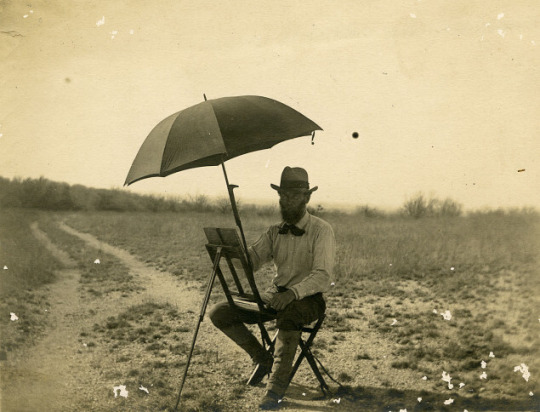

Artist Frank Reaugh completed the series in the 1930s, but they portray an earlier chapter of Texas history, when fences had not yet crossed the landscape, and men and cattle moved freely on the open range.
Born in Illinois in 1860, Reaugh moved to Texas when he was fifteen.
His family grew cotton, but young Reaugh was interested in art and nature, and divided his time between the family farm and studying art in St. Louis and Paris.
Reaugh soon gained a reputation for his luminous and impressionistic landscapes.
Several were exhibited at the World's Fairs of 1893 and 1904.

Another favorite subject was the Texas longhorn, which he studied carefully while following the herds along the Red, Wichita, and Brazos Rivers.
His most famous works feature this emblem of the state in its natural habitat, the Texas plains.
Known as the "dean of Texas artists," Reaugh was also a popular art instructor.
He founded the Dallas School of Fine Arts and often led students on sketching trips throughout his beloved Southwest.
A master of color, shading, and detail, Frank Reaugh recorded what he called "the broad opalescent prairies" as he saw them more than a century ago.
His works are on view at the Texas Capitol and museums around the state.
In 1890, Reaugh moved with his parents to Oak Cliff, Texas, where in 1903 he and his father built a metal studio, nicknamed “Old Ironsides,” behind the family home.

122 E 5th Street, Dallas TX 75203
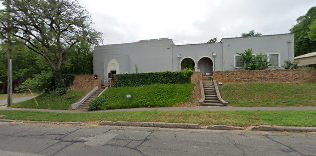
Charles Franklin Reaugh — born in Morgan County in southern Illinois 12 miles from Jacksonville on December 29, 1860.
The family's original Irish name, Castlereaugh, was shortened to Reaugh and pronounced "Ray."
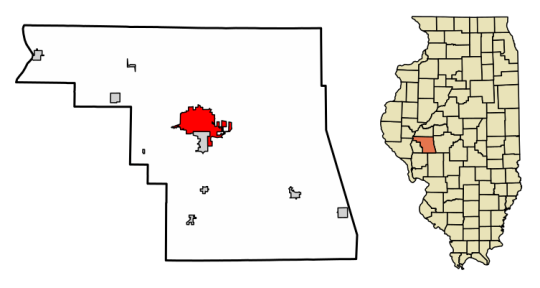
Texas Pavillion at the World's Columbian Exposition in Chicago in 1893.
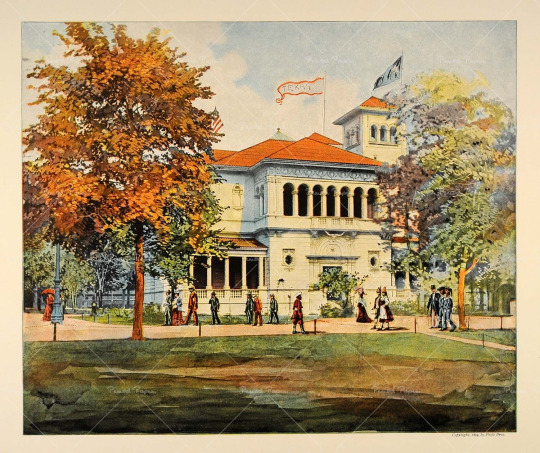


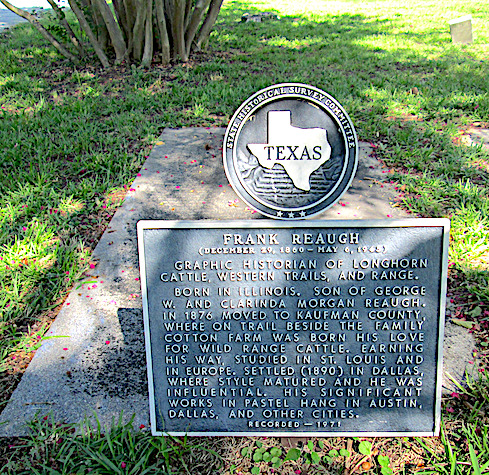

In 1928, Frank Reaugh commissioned a new studio for his work, El Sibil "The Vault".
Located at 122 E. 5th Street in Dallas, the location served as a studio, gallery, school and residence for Reaugh. It still stands today.
Inspired by Mediterranean architecture, El Sibil was largely Reaugh's own design. James Cheek was the principle architect turning Reaugh's design into reality. It incorporated many features of the "Old Ironsides" studio. Lots of indirect natural light, southern exposure, vaulted ceilings and an elevated sleeping area.
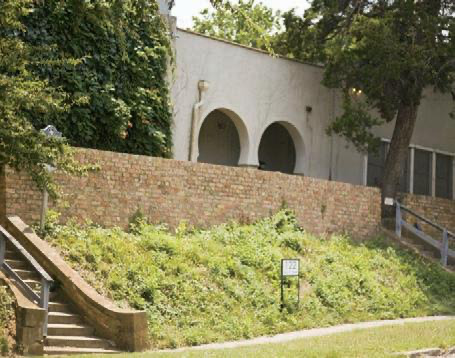

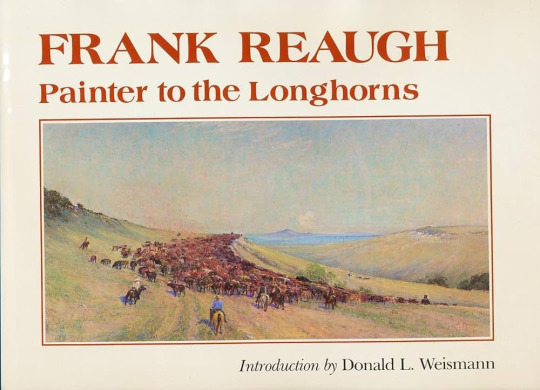

In 1966, Medellín opened the Octavio Medellín School of Sculpture in El Sibil, the former home and studio of painter Frank Reaugh.
youtube


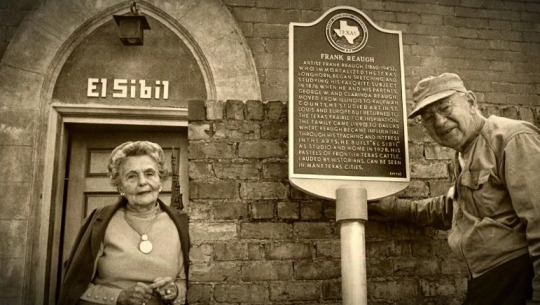
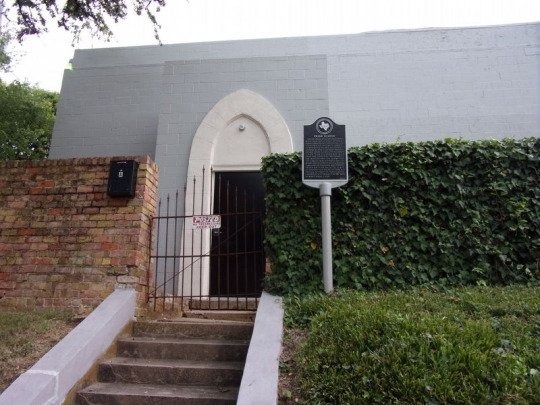
What You Don’t Know About Oak Cliff (And Should)
By John Merwin | April 1, 1977
The chalky bluff which rises out of the Trinity River bottom suggests something about one-third of our city.
Oak Cliff, population 300,000.
Oak Cliff stands boldly in a defensive position, like a bastion atop a bluff, peering out across the Trinity flood plain at Dallas.
Although a half-dozen bridges link Oak Cliff to Dallas, tying us together as one city, Oak Cliff is still “over there,” across the river.
The bridges serve as landmarks straddling the chasm which separates us, but in many ways the chasm is far more important. It marks a fundamental breach, one that has led “us” in Dallas to talk about “them” in Oak Cliff.
Although corporately we are one. spiritually we are not.
“We” in Dallas tend to envision “them” in Oak Cliff as a different people, which they are, and quite proud to be so.
Racially they are becoming increasingly black, economically they are predominantly blue collar and religiously they are so fundamental that First Baptist Church in Dallas joined in the fight to expel one of Oak Cliffs leading Baptist congregations, Beverly Hills, from the Dallas Baptist Association.
At Beverly Hills they speak in tongues.
In sedate “Dallas” Baptist Churches, such as First Baptist or Park Cities Baptist, they don’t.
Most east-of-the-river Dallasites have forgotten that but for a few votes Oak Cliff might have been looking down its nose at Dallas for the last 127 years.
In 1850 the independent settlements of Dallas, Oak Cliff, and Cedar Springs vied for the official seat of Dallas County.
Dallas received 181 votes, Oak Cliff 178 votes, while Cedar Springs (where Lemmon and the North Tollway now intersect) garnered 101 votes.
In the run-off election Dallas prevailed over Oak Cliff, 244 to 216.
To the victor went the spoils.
Dallas won the county courthouse and has been winning ever since, seizing practically all of the goodies for its side of the river, keeping Oak Cliff residents constantly looking north and east to Dallas.
It seems that most of the traffic crossing those half-dozen bridges which link Oak Cliff and Dallas is generated by Oak Cliff people commuting to Dallas instead of Dallas people visiting Oak Cliff.
The only place of community-wide interest in Oak Cliff is Marsalis Zoo, although once Burnett Field was there, just barely across the levee.
Even the spectators sat with their backs to Oak Cliff, staring over the outfield fence toward Dallas.
Practically everything else wound up in Dallas-east-of-the-Trinity.
Downtown is there, as is Fair Park, Love Field, SMU, White Rock Lake and nearly every major restaurant or entertainment spot worth noting.
Dallas also won the population race, which began on both sides of the river in the early 1840s.
For some reason growth on the Dallas side exceeded that in Oak Cliff both in quality and in quantity.
The most interesting development west of the Trinity occured in the 1850s when a group of several hundred Europeans, mostly French, founded a Utopian colony in what now is West Dallas.
It was named La Reunion, but collapsed within a few years.
Afterward many of the immigrant artisans crossed the river and settled in Dallas.
Local historian A.C. Greene credits the settlers of La Reunion with giving Dallas a cultural breadth it might not have acquired for decades without the Frenchmen’s influence.
Oak Cliff’s first ambitious development was laid out in the 1890s by T.L. Marsalis and J.S. Armstrong, the men who probably popularized the name “Oak Cliff.”
(For 50 years the area had been known as Hord’s Ridge, named for a local landowner.)
Marsalis and Armstrong split soon after the development opened.
Ultimately Marsalis failed in his Oak Cliff venture while Armstrong later succeeded with his sons-in-law in developing Highland Park.
Prestigious developments like Highland Park, University Park and Munger Place grew on North Dallas’ waxy blackland prairie while Oak Cliff struggled along on a beautifully hilly tern in across the Trinity, an obstacle which wasn’t permanertly spanned until the Houston Street Viaduct opened in 1912, forever linking Oak Cliff and Dallas.
Although other formerly independent cities such as East Dallas and West Dallas have merged smoothly into Dallas, Oak Cliff has not.
Even though Oak Cliff residents voted to join the City of Dallas in 1904, Oak Cliff still bears signs, both physical and spiritual, that it remain a city unto itself.
The basic cause of Oak Cliffs independence is the Trinity.
Although many areas of Oak Cliff are actually closer to downtown than are parts of North Dallas, Oak Cliff seems more distant because to get to them, you must cross the river an act which constantly reminds us that Oak Cliff is on the other side.
There’s another aspect of crossing the river that implies a dramatic change.
With the exception of R.L. Thornton Freeway and Corinth Street, every street flowing from Dallas west across the Trinity changes its name.
Houston becomes Zang, Commerce changes into Fort Worth Avenue, Continental into Singleton, Wycliff into Sylvan and Inwood into Hampton.
(Several of these actually cross into West Dallas, which is also west of the Trinity, and by some is mistakenly considered a part of Oak Cliff.)
Once you arrive in Oak Cliff more differences become apparent.
In the heart of Oak Ciff, there art streets named 8th Street, 10th Street and so on, a numbering system which implies that Oak Cliff really is a separate city.
Perhaps the biggest single image problem Oak Cliff fights is its location, wedged between West Dallas on the north, and South Dallas to the east.
West Dallas has never quite recovered from the days when many of its inhabitants lived in refrigerator crates and hovels.
Today it is burdened with the city’s infamous West Dallas housing projects.
For many years South Dallas was the section of town where the city’s blacks were bottled up.
When housing opened up in the Sixties and blacks’ earning power increased, thousands poured into East Oak Cliff from South Dallas, into a community of inexpensive frame houses.
The vast area east of South R.L. Thornton Freeway is now heavily black.
Not long ago blacks began moving west across Thornton Freeway.
Oak Cliff leaders groan when the racial situation is brought up, but nevertheless, it is the major question facing the future of the community.
Many Oak Cliff neighborhoods leaders have responded positively to the black immigration, displaying a determination to make racially mixed neighborhoods work, instead of resorting to the old patterns of white flight.
But not all of Oak Cliff leadership has adjusted so well.
One Oak Cliff bank has gone well out of its way to see that no blacks appear in photographs or film footage shot in the bank’s lobby, an unfortunate reaction considering that the prosperity of Oak Cliff’s banks depends upon the health and harmony of Oak Cliff as a community.
Bigotry exists in North Dallas as well as Oak Cliff, but North Dallas doesn’t yet have to adjust to black immigration.
Oak Cliff does.
As a whole, Oak Cliff residents find themselves in a lower economic bracket than most North Dallas residents.
The results are clear – Oak Cliff entertainment pales beside the offerings in North Dallas.
In Oak Cliff when someone says he is going to the country club, unmistakably that means one place – the Oak Cliff Country Club.
In North Dallas it could mean Brook Hollow, Dallas Country Club, Glen Lakes, Northwood, Spring Valley, Preston Trail, Bent Tree, Brookhaven, the Columbian or a handful of others which are close to North Dallas.
There are really three Oak Cliffs.
The first, east of R.L. Thornton, is black.
The second, west of R.L. Thornton, is blue collar.
The third, also west of Thornton, is middle and upper class white, a group of people that live in some of the most beautiful neighborhoods in Dallas.
The most stunning of these is the Kessler Park-Stevens Park area in north Oak Cliff, nudged up against the Dallas-Fort Worth Turnpike.
Many of the area’s homes are the equal of those in Highland Park, and often sell for half the price of a Highland Park home.
In Kessler Park, for instance, a two-bedroom, one-bath bungalow sells for approximately $22,000.
A similar home in Highland Park sells for at least $40,000 and sometimes as much as $65,000.
North Oak Cliff is also prettier than the Park Cities – the area is built on a series of cuestas – huge beds of rock protruding out of the ground at an angle, forming hills with gentle slopes on one side and steep cliffs on the other. Oak
Cliff’s other stunning neighborhood, Wynnewood Hills, surrounds the Oak Cliff Country Club.
One of the most peculiar aspects of Oak Cliff is its housing patterns.
Quite often by driving a single block a visitor can go from a strikingly beautiful neighborhood to a dumpy one.
There are few smooth transitions from glamorous to gauche.
This phenomenon has provided Oak Cliff with a brand of politics which makes the North Dallas political scene seem a bore.
With one hand Oak Cliff sends Rose Renfroe to city council, while with the other it dispatches Paul Ragsdale to Austin.
Renfroe and Ragsdale have about as much in common as George Wallace and Jesse Jackson.
This mixed bag of politicians arises from Oak Cliffs amazingly different neighborhoods, a marked contrast to North Dallas’ mile-after-mile of three and four-bedroom brick homes.
Draw the political lines any way you wish in North Dallas and there won’t be a dime’s worth of difference in who’s elected. In Oak Cliff, the lines have been drawn (many by Dan Weiser) to carve out constituencies of unique character.
Black Oak Cliff has Paul Ragsdale, Eddie Bernice Johnson, Lucy Patterson and Emmett Conrad.
The affluent areas of West Oak Cliff produced Bill Nicol, Chris Semos and Sarah Haskins.Unlike North Dallas, Oak Cliff is usually primed for a fight in the primary election.
North Dallas is solid Republican, and there’s little chance that the Republicans will pit two candidates of any contrast against each other.
In Oak Cliff, which is as Democratic as North Dallas is Republican, there are two wings of the party, making for some great fights in districts which have a reasonable balance between blacks and whites.
Normally blacks and liberal whites team up to take on the conservative whites – a coalition which has kept Oak Cliff State Senator Oscar Mauzy in office for years.
Already Oak Cliff is buzzing about the possibility of Representative Eddie Bernice Johnson’s taking on Senator Mauzy in 1978, so she can have a hand in the Congressional redistricting of 1981, perhaps carving out her own seat in Congress, much as Barbara Jordan did from the Texas Senate.
They also talk about the probability that Rose Renfroe will challenge County Commissioner Roy Orr in 1978, which could easily develop into the knock-down drag-out political fight of the decade.
What Oak Cliff needs as much as anything else is civic clout, the kind that comes with the managerial class which lives in North Dallas.
North Dallas gets things done because it knows how to get things done.
Part of the reason that the managerial class is absent from Oak Cliff is quite simple – most of the powerful corporations reside in downtown or North Dallas.
To be sure, there are some exceptions. Oak Cliff is home to Dixico, a very successful bread wrapper manufacturer, and to Vernon & James Smith Company, a construction firm which has had an enormous influence on Oak Cliff’s development.
But there are many businesses which sprang up in Oak Cliff, prospered there, then later moved their headquarters across the river into Dallas.
Among them are Republic National Life, First Texas Savings (Oak Cliff Savings & Loan), the Southland Corporation (7-Eleven) and Wyatt Cafeterias.
Oak Cliffs tenure in the Dallas mayor’s chair also underscores Oak Cliff’s shortage of influence.
Only two mayors have hailed from Oak Cliff.
They are the late George Sprague (1937-39) and Jimmy Temple (1947-49).
Today Temple lives in North Dallas, as does Sprague’s prominent son, Dr. Charles Sprague, president of the UT Health Science Center.
One of the most interesting studies of Oak Cliff was completed in 1963 by a local public opinion survey firm, Belden Associates.
Belden asked people all over Dallas what features they associated with Oak Cliff.
The two most commonly mentioned were that Oak Cliff was dry and that it was very religious.
These two images are very much entwined, dating back to 1956 when a group of Baptist ministers led a bitter fight to prohibit sale of alcoholic beverages in Oak Cliff.
They won, 17,000 to 15,000, in a campaign directed against a pack of sleazy bars, most of which fronted Davis Avenue.
Today Oak Cliff remains bone dry, as does practically all of Dallas, but Oak Cliff somehow retains a stigma because of its dryness.
Quite often the dry issue is given as the reason why Oak Cliff doesn’t have first class restaurants, which may betrue in part, but drinks are available at several Oak Cliff restaurant “private clubs.”
The situation isn’t that simple.
Oak Cliff lacks a strong contingent of young singles, young married couples and the affluent, which are the groups usually making up restaurant clientele.
The restaurant shortage is attributable to more than just a simple wet-dry issue; it is attributable to the absence from Oak Cliff of a certain lifestyle.
There is however, a resurgence of young people moving into the nicer areas of Oak Cliff, which might provide not only a livelier atmosphere, but also the basis of a new leadership class which might grow up in Oak Cliff and stay there.
Perhaps the most thorough analysis of why Oak Cliff remains such a well defined entity apart from the other two-thirds of Dallas was written in 1972 by Oak Cliff Chamber urban planner Jack Luby.
Luby pointed out that Oak Cliff in many ways has made a concerted effort to perpetuate its image as a separate city.
Luby opened the Dallas telephone book and found that 137 Oak Cliff organizations used “Oak Cliff in their names, while only 34 North Dallas organizations used “North Dallas” in their names.
He also pointed out that Oak Cliff has its own magazine, Oak Cliff, which is published by the Oak Cliff Chamber of Commerce, and its own newspaper, The Oak Cliff Tribune.
Today there is a second Oak Cliff newspaper, The Oak Cliff Press.
Luby noted that the Oak Cliff Chamber of Commerce, which is 57 years old, has done much to promote the idea of Oak Cliff as a separate entity.
He also observed a certain attitude among Oak Cliff residents, sort of a self-fulfilling prophecy that Oak Cliff would never secure any first class developments and that much of life is “too high class” for Oak Cliff.
What Oak Cliff needs to shatter that attitude, and indeed to wipe out its complex, is a major developer to produce a first class project for Oak Cliff.
Southwest Oak Cliff’s Red Bird Mall is a step in that direction.
What Oak Cliff now needs is a major development at its northern edge, preferably a major project on the west bank of the Trinity, which would blend nicely with the proposed Town Lake.
Town Lake, which could be formed by damming the Trinity just south of downtown, would smooth over the chasm which separates Dallas and Oak Cliff.
A major west bank development could spur redevelopment of all Northeast Oak Cliff.
If it included high-rise buildings, the development would complement the high-rise structures across the river in downtown Dallas.
No matter what happens, it is unlikely that Oak Cliff will ever fade into the background of Dallas.
It is too big, too old and too proud to bow to Dallas, the state’s second largest city.
Oak Cliff, after all, is Texas’ sixth largest city. Whoever heard of a city that size fading away?
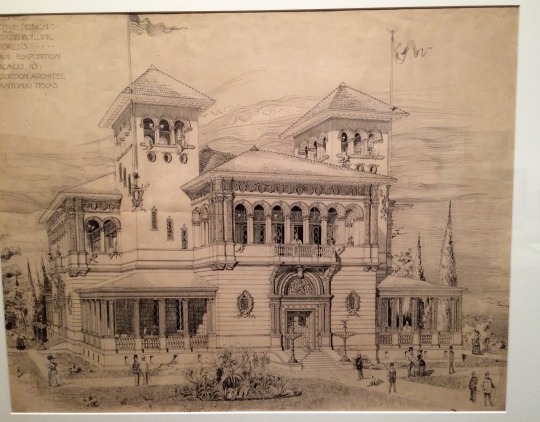
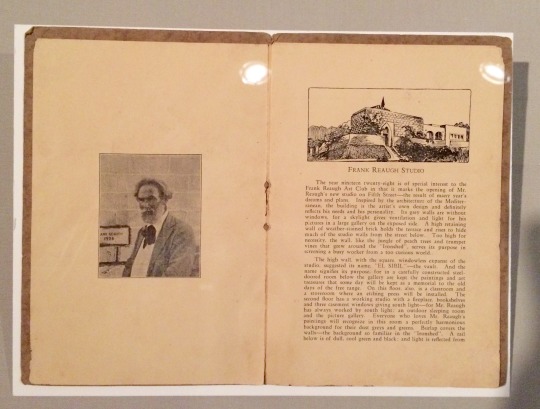
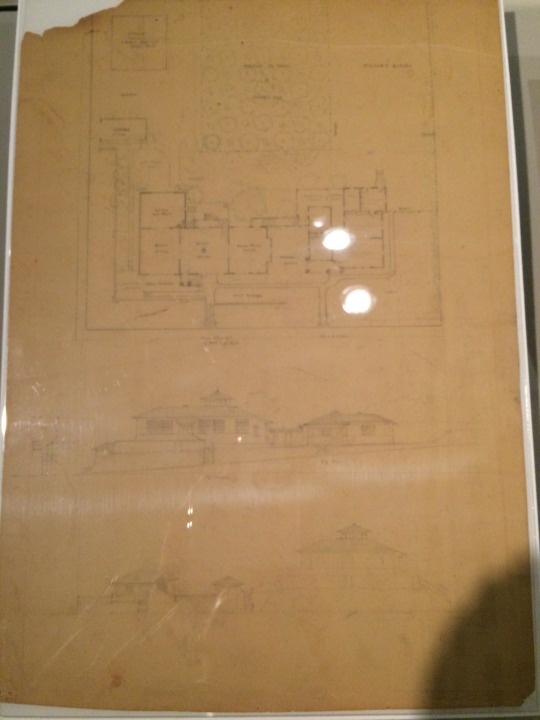




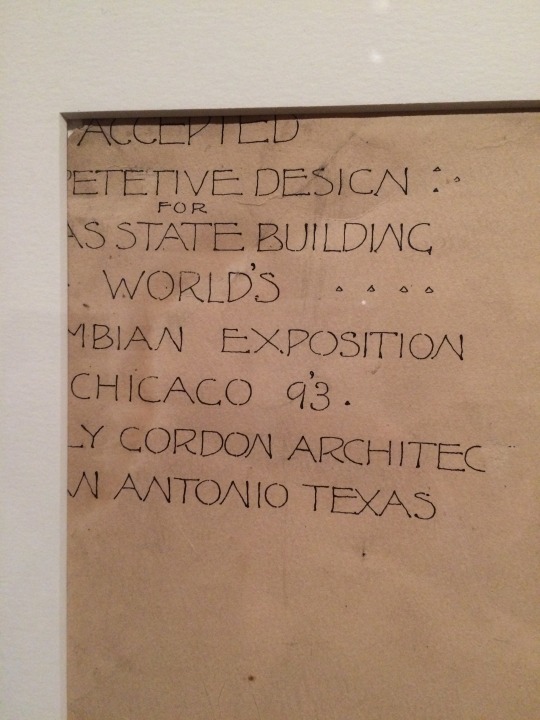


0 notes
Text
Events 12.30 (before 1930)
534 – The second and final edition of the Code of Justinian comes into effect in the Byzantine Empire.
999 – Battle of Glenmama: The combined forces of Munster and Meath under king Brian Boru inflict a crushing defeat on the allied armies of Leinster and Dublin near Lyons Hill in Ireland.
1066 – Granada massacre: A Muslim mob storms the royal palace in Granada, crucifies Jewish vizier Joseph ibn Naghrela and massacres most of the Jewish population of the city.
1419 – Hundred Years' War: Battle of La Rochelle.
1460 – Wars of the Roses: Lancastrians kill the 3rd Duke of York and win the Battle of Wakefield.
1702 – Queen Anne's War: James Moore, Governor of the Province of Carolina, abandons the Siege of St. Augustine.
1813 – War of 1812: British soldiers burn Buffalo, New York.
1816 – The Treaty of St. Louis between the United States and the united Ottawa, Ojibwa, and Potawatomi Indian tribes is proclaimed.
1825 – The Treaty of St. Louis between the United States and the Shawnee Nation is proclaimed.
1853 – Gadsden Purchase: The United States buys land from Mexico to facilitate railroad building in the Southwest.
1890 – Following the Wounded Knee Massacre, the United States Army and Lakota warriors face off in the Drexel Mission Fight.
1896 – Filipino patriot and reform advocate José Rizal is executed by a Spanish firing squad in Manila.
1896 – Canadian ice hockey player Ernie McLea scores the first hat-trick in Stanley Cup play, and the Cup-winning goal as the Montreal Victorias defeat the Winnipeg Victorias 6–5.
1897 – The British Colony of Natal annexes Zululand.
1902 – The Discovery Expedition under Robert Falcon Scott attained a Farthest South at 82°17′S in Antarctica.
1903 – A fire at the Iroquois Theater in Chicago, Illinois kills at least 605.
1905 – Former Idaho Governor Frank Steunenberg is assassinated at the front gate of his home in Caldwell.
1906 – The All-India Muslim League is founded in Dacca, East Bengal, British India (later Dhaka, Bangladesh).
1916 – Russian mystic and advisor to the Tsar Grigori Yefimovich Rasputin is murdered by a loyalist group led by Prince Felix Yusupov. His frozen, partially-trussed body was discovered in a Petrograd river three days later.
1916 – The last coronation in Hungary is performed for King Charles IV and Queen Zita.
1922 – The Union of Soviet Socialist Republics (USSR) is formed.
1927 – The Ginza Line, the first subway line in Asia, opens in Tokyo, Japan.
0 notes
Text

WutBJU found this little gem in the 1968 Vintage.
John Stormer was a featured speaker at Bob Jones University's Bible Conference in 1968. It's BIBLE CONFERENCE. And who does BJU invite?
A fear-monger that could be a model for Ron DeSantis' 2024 Presidential campaign.
The Greenville News reported on it. A transcription with commentary will follow.

"Forty eight hours ago a man was shot down by a sniper's bullet in Memphis, Tenn. Since then, at least 20 people have been killed in violence in 46 cities of the United States. As we meet here tonight (Saturday), troops have the White House and Capitol surrounded to keep mobs from burning it to the ground. We live in a troubled land; we live in a land which is in trouble."
Well, yeah.
Stormer's speech in Rodeheaver was on Saturday, April 6, 1968.
Anybody remember what happened on April 4, 1968? Martin Luther King was assassinated.

Does Stormer mention MLK ever? At all?
Of course not. He's just "a man." Can you even believe it? THE Martin Luther King, Jr. is nothing but "a man" in this Klandamentalist account.
These were the opening remarks Saturday night as John Stormer, author of "Note Dare Call It Treason," spoke to an audience of more than 4,000 at Bob Jones University.
He said that within the last four years more than 150 people have been gunned down in the streets of America; thousands of others injured, more than a billion dollars worth of property burned or otherwise destroyed. "What is behind all the unrest and violence?" Stormer asked.
Oh what could it be? :/
He answered the question by saying that the President's Commission on Civil Disorders says that poverty, lack of economic opportunity, prejudice, and White racism are responsible. "Others, including, J. Edgar Hoover, grand juries in cities wrecked by violence, and police officials, have made it plain that Communists and other subversives have played upon the discontent, which stems from some of these conditions, to provoke the actual violence."
Here's a place to start reading about the Kerner Commission.
But the real problem in 1968 is, of course, a Red problem!
He quoted Hoover as saying that Communists and other subversives and extremists strive and labor ceaselessly to promote racial trouble and take advantage of racial discord in this country. Such elements were active in exploiting and aggravating the riots; for example, in Harlem, Watts, Cleveland and Chicago.
Stormer said that all the rioters are not pro-Communist or anti-American. He quoted the Negro writer Louis Lomax, who after the Detroit riots, said that once the organized revolutionaries break open stores and get the violence started, then the human element begins to play into the hands of the revolutionaries.
And look at Stormer here. Does he sound any different than every white supremacist for the last three years?
Continuing, the conservative author said, "Men and women move in to satisfy their lusts for free cigarettes, free clothes, free booze, and anything else they can carry away. I have studied the cause for riots in the last several years, and I was puzzled for a long time, We have always had poverty in America; there has always been discrimination against any group as they have come to America."
Going back to the depression days, Stormer mentioned that during that time more than 15 million people were unemployed; the communists had a thousand members working actively to promote a revolution; and there were no riots. Why?
"There are two principle differences between then and now," he noted. "In the 1930s it was a certainty that if trouble would break out and looting start, the government would move quickly and forcefully to put down any trouble. This is no longer the case."
Ah, yes! The good ol' days during the Great Depression!
There is a second element, as well. In the 1930s there was still a general acceptance among most of the population that there was at least a possibility that men would have to answer to God for his actions even if he weren't caught by the police. In the 1930s Christians, both black and white, and their churches were still faithful in proclaiming the message of God's judgment to come for all men. This puts a restraint on the natural wickedness of the heart of man.
Stormer told his audience that the function of the Christian was that which Jesus Christ referred do when he told his disciples, "Ye are the salt of the earth." "In the Lord's day," continued Stormer, "salt was used to preserve or to keep meat from getting rotten. If the Christian is serving his function in society, he tends to hold back corruption."
In conclusion he said "Because Christians are not functioning as the salt of the earth and have lost their savor, Christians in all society are being trodden under the feet of men."
Have they ever changed?
1 note
·
View note
Text
A Guide to the World's Most Iconic Skyscrapers
skyscraper, a very tall multistoried building. The name first came into use during the 1880s, shortly after the first skyscrapers were built, in the United States. The development of skyscrapers came as a result of the coincidence of several technological and social developments. The term skyscraper originally applied to buildings of 10 to 20 stories, but by the late 20th century the term was used to describe high-rise buildings of unusual height, generally greater than 40 or 50 stories.
The increase in urban commerce in the United States in the second half of the 19th century augmented the need for city business space, and the installation of the first safe passenger elevator (in the Haughwout Department Store, New York City) in 1857 made practical the erection of buildings more than four or five stories tall. Although the earliest skyscrapers rested on extremely thick masonry walls at the ground level, architects soon turned to the use of a cast-iron and wrought-iron framework to support the weight of the upper floors, allowing for more floor space on the lower stories. James Bogardus built the Cast Iron Building (1848, New York City) with a rigid frame of iron providing the main support for upper-floor and roof loads.

Britannica Quiz
Largest, Tallest, and Smallest Around the Globe Quiz

Discover real estate attorney Owen Aldis's formula for the profitable management of tall multistory office buildings, which informed the design of early skyscrapers
See all videos for this article
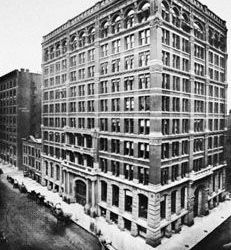
Home Insurance Company Building
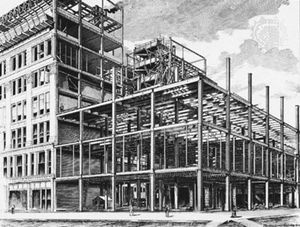
Fair Store
It was, however, the refinement of the Bessemer process, first used in the United States in the 1860s, that allowed for the major advance in skyscraper construction. As steel is stronger and lighter in weight than iron, the use of a steel frame made possible the construction of truly tall buildings. William Le Baron Jenney’s 10-story Home Insurance Company Building (1884–85) in Chicago was the first to use steel-girder construction. Jenney’s skyscrapers also first employed the curtain wall, an outer covering of masonry or other material that bears only its own weight and is affixed to and supported by the steel skeleton. Structurally, skyscrapers consist of a substructure of piers beneath the ground, a superstructure of columns and girders above the ground, and a curtain wall hung on the girders.
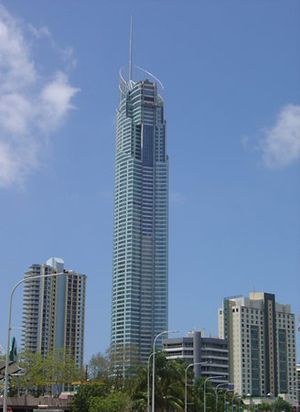
Gold Coast
As the population density of urban areas has increased, so has the need for buildings that rise rather than spread. The skyscraper, which was originally a form of commercial architecture, has increasingly been used for residential purposes as well.

Woolworth Building

Chrysler Building
The design and decoration of skyscrapers have passed through several stages. Jenney and his protégé Louis Sullivan styled their buildings to accentuate verticality, with delineated columns rising from base to cornice. There was, however, some retention of, and regression to, earlier styles as well. As part of the Neoclassical revival, for instance, skyscrapers such as those designed by the firm of McKim, Mead, and White were modeled after Classical Greek columns. The Metropolitan Life Insurance Building in New York City (1909) was modeled by Napoleon Le Brun after the Campanile of St. Mark’s in Venice, and the Woolworth Building (1913), by Cass Gilbert, is a prime example of neo-Gothic decoration. Even the Art Deco carvings on such towers as the Chrysler Building (1930), the Empire State Building (1931), and the RCA Building (1931) in New York City, which were then considered as modern as the new technology, are now viewed as more related to the old ornate decorations than to truly modern lines.
0 notes
Text
A Guide to the World's Most Iconic Skyscrapers
skyscraper, a very tall multistoried building. The name first came into use during the 1880s, shortly after the first skyscrapers were built, in the United States. The development of skyscrapers came as a result of the coincidence of several technological and social developments. The term skyscraper originally applied to buildings of 10 to 20 stories, but by the late 20th century the term was used to describe high-rise buildings of unusual height, generally greater than 40 or 50 stories.
The increase in urban commerce in the United States in the second half of the 19th century augmented the need for city business space, and the installation of the first safe passenger elevator (in the Haughwout Department Store, New York City) in 1857 made practical the erection of buildings more than four or five stories tall. Although the earliest skyscrapers rested on extremely thick masonry walls at the ground level, architects soon turned to the use of a cast-iron and wrought-iron framework to support the weight of the upper floors, allowing for more floor space on the lower stories. James Bogardus built the Cast Iron Building (1848, New York City) with a rigid frame of iron providing the main support for upper-floor and roof loads.

Britannica Quiz
Largest, Tallest, and Smallest Around the Globe Quiz

Discover real estate attorney Owen Aldis's formula for the profitable management of tall multistory office buildings, which informed the design of early skyscrapers
See all videos for this article

Home Insurance Company Building

Fair Store
It was, however, the refinement of the Bessemer process, first used in the United States in the 1860s, that allowed for the major advance in skyscraper construction. As steel is stronger and lighter in weight than iron, the use of a steel frame made possible the construction of truly tall buildings. William Le Baron Jenney’s 10-story Home Insurance Company Building (1884–85) in Chicago was the first to use steel-girder construction. Jenney’s skyscrapers also first employed the curtain wall, an outer covering of masonry or other material that bears only its own weight and is affixed to and supported by the steel skeleton. Structurally, skyscrapers consist of a substructure of piers beneath the ground, a superstructure of columns and girders above the ground, and a curtain wall hung on the girders.

Gold Coast
As the population density of urban areas has increased, so has the need for buildings that rise rather than spread. The skyscraper, which was originally a form of commercial architecture, has increasingly been used for residential purposes as well.

Woolworth Building

Chrysler Building
The design and decoration of skyscrapers have passed through several stages. Jenney and his protégé Louis Sullivan styled their buildings to accentuate verticality, with delineated columns rising from base to cornice. There was, however, some retention of, and regression to, earlier styles as well. As part of the Neoclassical revival, for instance, skyscrapers such as those designed by the firm of McKim, Mead, and White were modeled after Classical Greek columns. The Metropolitan Life Insurance Building in New York City (1909) was modeled by Napoleon Le Brun after the Campanile of St. Mark’s in Venice, and the Woolworth Building (1913), by Cass Gilbert, is a prime example of neo-Gothic decoration. Even the Art Deco carvings on such towers as the Chrysler Building (1930), the Empire State Building (1931), and the RCA Building (1931) in New York City, which were then considered as modern as the new technology, are now viewed as more related to the old ornate decorations than to truly modern lines.
0 notes
Text
Mafia in the 1920s:
During the 1920s, the Mafia reached new heights. Prohibition enabled mobsters to make millions of dollars via selling illegal. Famous figures such as Al Capone, Charles Luciano, Bugsy Siegel, and John Dillinger aided the Mafia's rise to prominence. Making the notorious lives of the Mafia known to all Americans. The mafia was able to obtain the affluent lifestyle that they had was via ratifying the 18th amendment. Prohibition was the major money generator in the Mob. AL Capone alone made $60 million a year selling alcohol. Many other organised crooks with fine suits and flamboyant names populate the 1920s. The 20's most renowned gangsters were: "Scarface" Capone, "Lucky" Luciano, "Bugs" Moran (AKA Jack "Legs" Diamond), and "Dutch" Schultz. The names became "Pretty Boy" Floyd and "Babyface" Nelson in the 1930s, and "Bugsy" Siegal in the 1940s. einsteinerupload of. Along with his sharp outfit, every well-known criminal has a distinctive title. It has also been said that the gangster as perceived by the American public is a product of the media. In his excellent book Inventing the Public Enemy: The Gangster in American Culture, David E. Ruth speaks about 1920s gangsters dress. The implementation of prohibition in 1919 signalled a significant shift in the way gangsters conducted their daily business. It was no longer acceptable to hit someone over the head with a pipe in order to steal their pocket watch and stray coins. Instead, the mob structured and integrated itself throughout Chicago, Detroit, and New York City's boroughs.
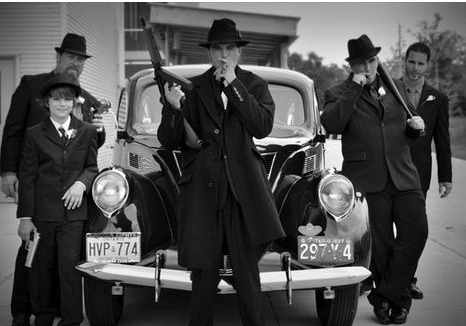
youtube
"The latest styles marketed the gangster as an avid consumer who invested the time and expense necessary to stay on the leading edge of fashion . . . his new automobile, his tastefully furnished apartment, his diamond stickpin, his two diamond rings, his beltbuckle . . . fifty suits of clothes, his twenty five pairs of shoes."

youtube
Some make millions of dollars every year delivering beer and liquor to speakeasies around the country. By being feared and respected inside their communities the 1920s gangsters could earn a decent living from the public: strong-arming their areas for tiny but widespread price hikes for food and services, then skimming their earnings from the suppliers of these items. The gangster's position in urban culture was thus cemented, and the real criminal businessman was born. einsteinerupload of. Vito Corleone arrives in America with little money. He fights to make ends meet via legitimate jobs, pulls himself up by his bootstraps, gathers a criminal gang of devoted followers, and rises to fortune and power by his boldness, cunning, organisation, and hard work. In the 1920s gangsters were the American symbols of the self-made-man. Expanding their organisations into unlawful markets, mainly racketeering, bootlegging, and prostitution, these gangsters live life by their own dark yet rigid code of ethics, but outside of the iron grasp of the law. The public's awareness of 1920s gangster dress owes largely to prohibition and the newspaper media's love affair with these criminal media darlings. The modern "gangster" continues to be the ultimate consumer of all things opulent and costly. Jewelery, clothes, vehicles, and mansions are the rewards of the criminal businessman's lifestyle.
Referencing:
0 notes